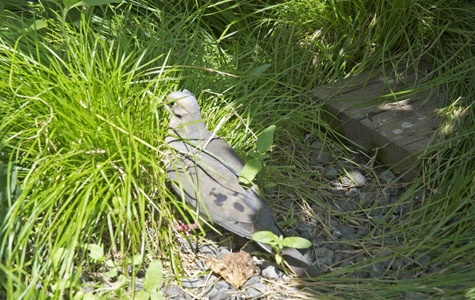There was a beautiful, Sternfeldian sky above Manhattan this afternoon, and even though I had work to do I grabbed my camera and hit the High Line. There I found the striking Robert Adams billboard that just went up yesterday, which is part of a new outdoor photography exhibit that Joel Sternfeld is curating. You can read about it here, on the High Line’s website. The photo is called Nebraska State Highway 2, Box Butte County, and it conjures the prairie grasses that are in such wonderful abundance now (you can practically smell the cilantro of the prairie dropseed from the street below). It also puts a midwestern highway parallel to Tenth Avenue, which makes sense in a weird way when you consider that “cowboys” rode down these streets beginning in the 1840s.
The High Line is beautiful all the time, but on gray, rainy days, it has a particular magic. Sternfeld told Elizabeth Barlow Rogers, the great New York City conservationist, that he only shot photos on days when the sky was a neutral gray. “I wanted it to be clear in the pictures that if there was glory in the High Line, it wasn’t due to my skill as a photographer. By not borrowing beauty from the sky, the High Line itself is what is important in the picture.” You can read the whole interview here.
So today it was a Sternfeld sky over an Adams photograph. The High Line brings the prairie to Manhattan, and on a rare, rainy, August day, it was a treat to behold.


















